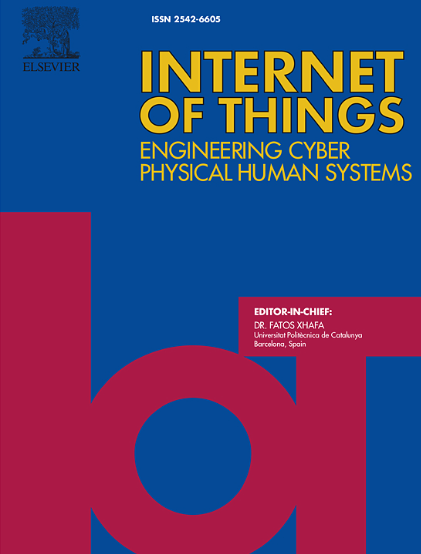Energy efficient resource management for real-time IoT applications
IF 6
3区 计算机科学
Q1 COMPUTER SCIENCE, INFORMATION SYSTEMS
引用次数: 0
Abstract
The Internet of Things (IoT) has a large and rapidly expanding number of deployed devices, which leads to a significant global energy consumption footprint. Diverse IoT use cases, including smart cities, smart grids, Industry 5.0, eHealth, and autonomous vehicles, are contributing to this increase in energy consumption. Optimising energy utilisation is crucial to sustaining the exponential growth of IoT applications, which demand stringent delays and latencies measured in milliseconds and microseconds. There are additional complexities with the emergence of edge, fog, and cloud computing and the need to manage the energy consumption at all the layers. In this paper, mechanisms that can be used to minimise energy consumption within an edge–fog–cloud IoT architecture for real-time IoT applications are being proposed. We investigate mechanisms for optimal node selection, primarily focusing on minimising energy usage while adhering to the Quality of Service (QoS) requirements of various IoT requests. The mechanisms include genetic, modified genetic, and delay-aware algorithms tailored explicitly for real-time IoT applications. We evaluated the proposed mechanisms using a simulation of diverse network scenarios. The results presented in the paper provide insight into balancing processing time and energy efficiency, which are critical considerations in sustainably developing IoT applications in an edge–fog–cloud IoT architecture.
实时物联网应用的节能资源管理
物联网(IoT)部署的设备数量庞大且迅速扩大,导致全球能源消耗足迹显著。包括智能城市、智能电网、工业5.0、电子健康和自动驾驶汽车在内的各种物联网用例正在推动能源消耗的增加。优化能源利用对于维持物联网应用的指数级增长至关重要,物联网应用需要严格的延迟和以毫秒和微秒为单位的延迟。边缘计算、雾计算和云计算的出现带来了额外的复杂性,并且需要管理所有层的能耗。在本文中,提出了可用于最小化实时物联网应用的边缘雾云物联网架构内能耗的机制。我们研究了最优节点选择的机制,主要关注最小化能源使用,同时坚持各种物联网请求的服务质量(QoS)要求。这些机制包括为实时物联网应用量身定制的遗传、修改遗传和延迟感知算法。我们通过模拟不同的网络场景来评估所提出的机制。本文提出的结果提供了平衡处理时间和能源效率的见解,这是在边缘雾云物联网架构中可持续发展物联网应用的关键考虑因素。
本文章由计算机程序翻译,如有差异,请以英文原文为准。
求助全文
约1分钟内获得全文
求助全文
来源期刊

Internet of Things
Multiple-
CiteScore
3.60
自引率
5.10%
发文量
115
审稿时长
37 days
期刊介绍:
Internet of Things; Engineering Cyber Physical Human Systems is a comprehensive journal encouraging cross collaboration between researchers, engineers and practitioners in the field of IoT & Cyber Physical Human Systems. The journal offers a unique platform to exchange scientific information on the entire breadth of technology, science, and societal applications of the IoT.
The journal will place a high priority on timely publication, and provide a home for high quality.
Furthermore, IOT is interested in publishing topical Special Issues on any aspect of IOT.
 求助内容:
求助内容: 应助结果提醒方式:
应助结果提醒方式:


